Aurubis Bundle
How Did Aurubis Forge Its Path to Copper Dominance?
Journey back in time to uncover the fascinating Aurubis SWOT Analysis, a global powerhouse in non-ferrous metals. From its roots in 1770 Hamburg, Germany, with a silver separating furnace, Aurubis has evolved into a leader in copper production. Discover how this company transformed from a precious metal refiner into the world's largest copper recycler.
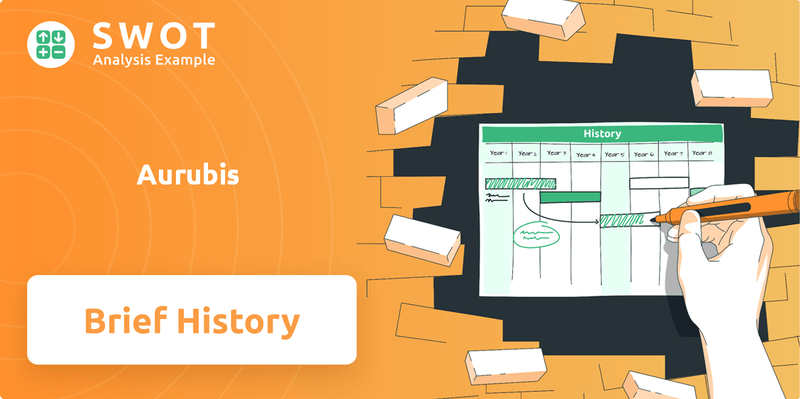
The Aurubis company story is a compelling narrative of adaptation and innovation. Witness its expansion from a local operation to a global entity with a significant presence in copper production and metal refining. Understanding the Aurubis history provides valuable insights into its strategic alignment with future technologies and its commitment to sustainability, particularly within the circular economy. Moreover, explore the company's significant role in renewable energy and other innovative sectors.
What is the Aurubis Founding Story?
The story of the Aurubis company begins in 1770, when the 'Beit, Marcus und Salomon, Gold- und Silberscheider' firm was established in Hamburg. This marked the start of a long journey for a company that would become a major player in the metal industry. Marcus Salomon Beit obtained permission to build a silver parting and smelting furnace in Hamburg, setting the stage for the company's future.
Initially, the business focused on refining precious metals and smelting coins. However, the company's direction shifted significantly over time. This evolution would eventually lead to the formation of the modern Aurubis, a leading global provider in the copper and metal refining sectors. The company's history is marked by strategic adaptations to market demands and technological advancements.
The Aurubis history is a story of growth and adaptation, evolving from precious metal refining to copper production. The company's journey reflects the changing landscape of the metal industry and its response to global economic shifts and technological innovation. This evolution is a testament to the company's ability to navigate challenges and seize opportunities over centuries.
The Aurubis company has a rich history, marked by key events that shaped its development and growth.
- 1770: The 'Beit, Marcus und Salomon, Gold- und Silberscheider' firm is founded in Hamburg, marking the beginning of the company's lineage.
- 1846: Joh. Ces. Godeffroy & Sohn acquires a stake, leading to the formation of 'Elbkupferwerk' in Hamburg, and the expansion into copper smelting.
- 1866: Norddeutsche Affinerie AG, the direct predecessor of Aurubis AG, is formally established on April 28, with Norddeutsche Bank as the main shareholder.
- 2009: The company adopts the name Aurubis, derived from 'aurum' (gold) and 'rubrum' (red), symbolizing copper as 'red gold'.
In 1846, a significant shift occurred when Joh. Ces. Godeffroy & Sohn invested in Beit, Marcus und Salomon, leading to the creation of 'Elbkupferwerk' in Hamburg. This partnership was formed during a period of increased demand for metals, especially copper, following the Great Fire of Hamburg in 1842. The fire highlighted the need for non-combustible building materials, driving the expansion of copper production. The business model transformed from precious metal refining to include the smelting of copper ores, which Hamburg shipowners began bringing from the Americas around 1830. This strategic move positioned the company to capitalize on the growing demand for copper.
The formal establishment of Norddeutsche Affinerie AG, which directly preceded Aurubis AG, took place on April 28, 1866. This new entity was created by a consortium headed by Ferdinand Beit, in collaboration with Norddeutsche Bank, which became the primary shareholder with a 75% stake. This formation followed a period of reduced demand and metal prices, which had caused the temporary closure of the Elbkupferwerk. The name Aurubis, adopted in April 2009, is a modern creation derived from the Latin words 'aurum' (gold) and 'rubrum' (red), representing copper as 'red gold' and emphasizing its value. This name change reflected the company's evolution and its commitment to the copper industry.
The Aurubis company timeline shows its adaptability and strategic responses to market changes. The company's ability to evolve from precious metal refining to copper production and its subsequent rebranding as Aurubis demonstrate its resilience and forward-thinking approach. This evolution has allowed Aurubis to maintain a strong position in the global metal market.
Aurubis SWOT Analysis
- Complete SWOT Breakdown
- Fully Customizable
- Editable in Excel & Word
- Professional Formatting
- Investor-Ready Format
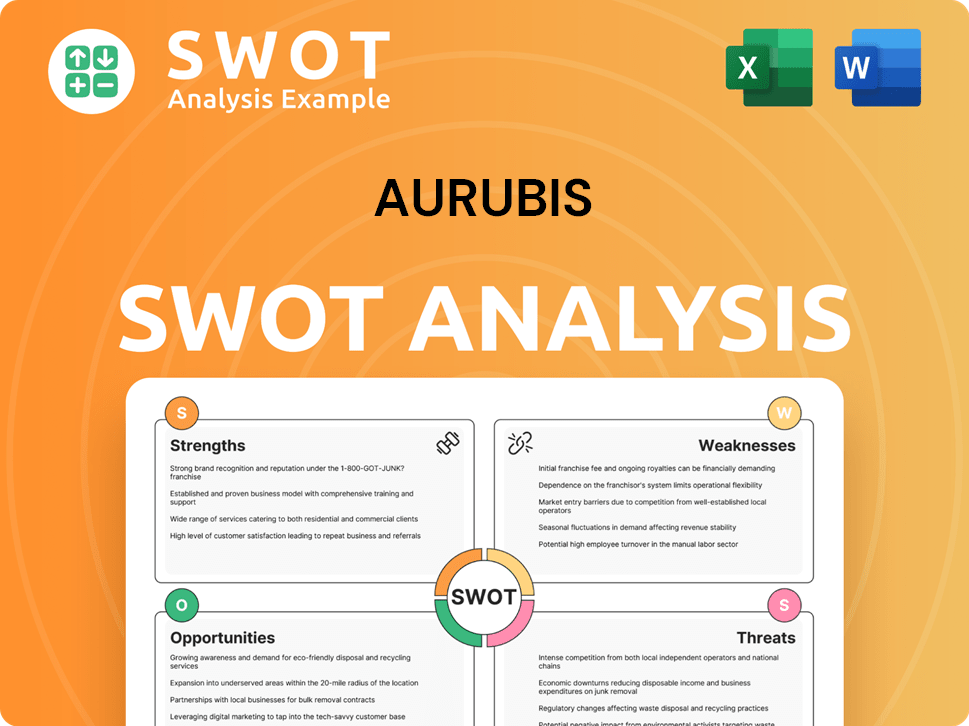
What Drove the Early Growth of Aurubis?
The early growth of Norddeutsche Affinerie, the precursor to Aurubis, was marked by rapid expansion in the German copper industry. By around 1860, the company controlled over half of Germany's copper production. Technological advancements, such as the continuous copper electrolysis system introduced in 1876, played a crucial role in this growth.
In its early years, the company quickly became a significant player in the German copper industry. By approximately 1860, it accounted for over 50% of the total German copper production. This early success set the stage for future growth and expansion in the metal refining sector.
A key technological milestone was the commissioning of the first fully continuous copper electrolysis system in 1876. This innovation significantly improved efficiency and production capacity. These advancements were crucial for maintaining its leading position in copper production.
The company's expansion continued into the 20th century, with the relocation of its main plant to the island of Peute in Hamburg, Germany, starting in 1909. This site remains its largest plant and headquarters today. After the World Wars, production resumed quickly in 1948, with major plants becoming operational again.
A pivotal moment occurred in 1998 when Norddeutsche Affinerie AG went public. The IPO facilitated further expansion through acquisitions. Key acquisitions included Kayser in 1999, Hüttenwerke Kayser AG in 2000, and Prymetall in 2002, significantly boosting its production capacity.
Aurubis PESTLE Analysis
- Covers All 6 PESTLE Categories
- No Research Needed – Save Hours of Work
- Built by Experts, Trusted by Consultants
- Instant Download, Ready to Use
- 100% Editable, Fully Customizable
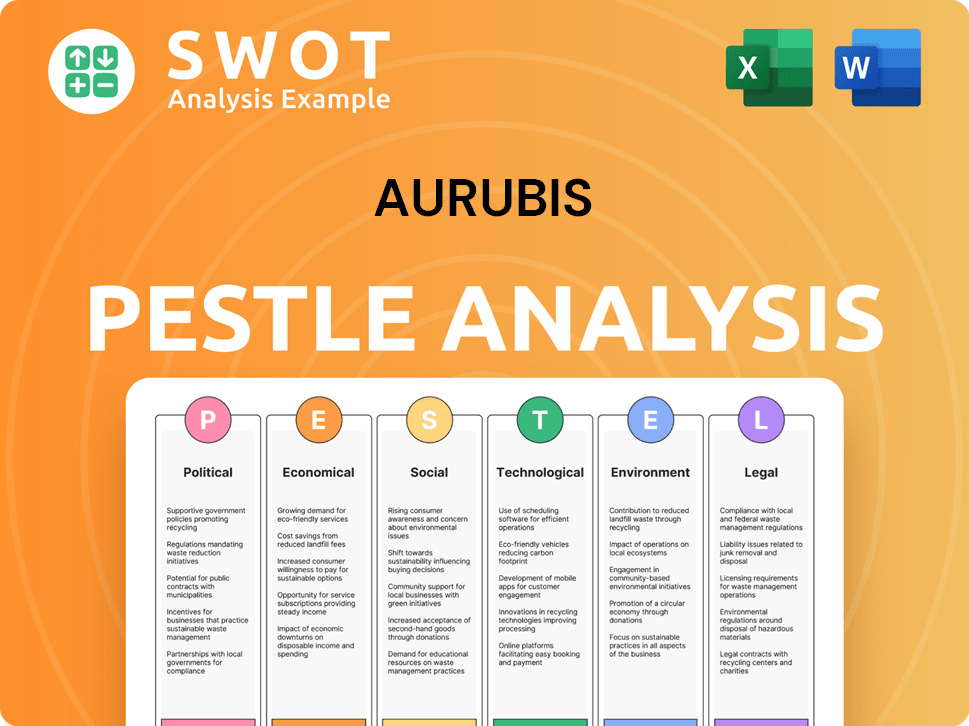
What are the key Milestones in Aurubis history?
The Aurubis company has a rich history, marked by significant achievements and strategic pivots in the metal refining industry. From pioneering advancements in copper production to navigating environmental challenges and expanding its global footprint, Aurubis has consistently adapted to the evolving demands of the market.
| Year | Milestone |
|---|---|
| 1876 | Implementation of the first fully continuous copper electrolysis system, showcasing early metallurgical expertise. |
| 2000-Present | Invested over €1 billion in environmental protection measures, demonstrating a commitment to sustainability. |
| 2018 | Launched the Industrial Heat project in Hamburg, Germany's largest industrial heat project, utilizing a sub-process of copper production for carbon-free industrial heat. |
| 2024/2025 | Strategic investments in multimetal recycling, aiming for 30% growth in processing capacity by 2027. |
Aurubis has consistently embraced innovation to maintain its leading position in the metal refining sector. The company's early adoption of continuous copper electrolysis in 1876 set a precedent for technological advancement.
The implementation of the first fully continuous copper electrolysis system in 1876 was a groundbreaking innovation, significantly improving efficiency in copper production. This early adoption of advanced technology set the stage for future innovations.
The Industrial Heat project in Hamburg, launched in 2018, uses a sub-process of copper production to provide carbon-free industrial heat. This initiative highlights Aurubis's commitment to sustainable practices.
Aurubis is expanding its multimetal recycling capabilities, targeting a 30% growth in processing capacity by 2027. This strategic move supports the circular economy and reduces environmental impact.
Despite its successes, Aurubis has faced challenges, particularly concerning environmental impact and financial performance. In the early 1980s, environmental concerns arose due to heavy metal emissions, leading to the 'arsenic scandal' in Hamburg.
In the early 1980s, Aurubis was identified as a significant heavy metal emitter in northern Germany, leading to the 'arsenic scandal' in Hamburg in 1985. This resulted in agreements with authorities to reduce emissions.
In the first half of the 2024/25 fiscal year, revenue surged by 14% to €4.97 billion, driven by higher sales volumes and improved copper and sulfuric acid pricing. However, operating profit before taxes (EBT) plummeted by 25% to €99 million due to lower concentrate smelting charges and startup costs.
The company experienced a reduced concentrate throughput of roughly 7% and treatment and refining charges (TC/RCs) that were approximately 15% below previous year levels. These factors impacted the financial results.
Aurubis Business Model Canvas
- Complete 9-Block Business Model Canvas
- Effortlessly Communicate Your Business Strategy
- Investor-Ready BMC Format
- 100% Editable and Customizable
- Clear and Structured Layout
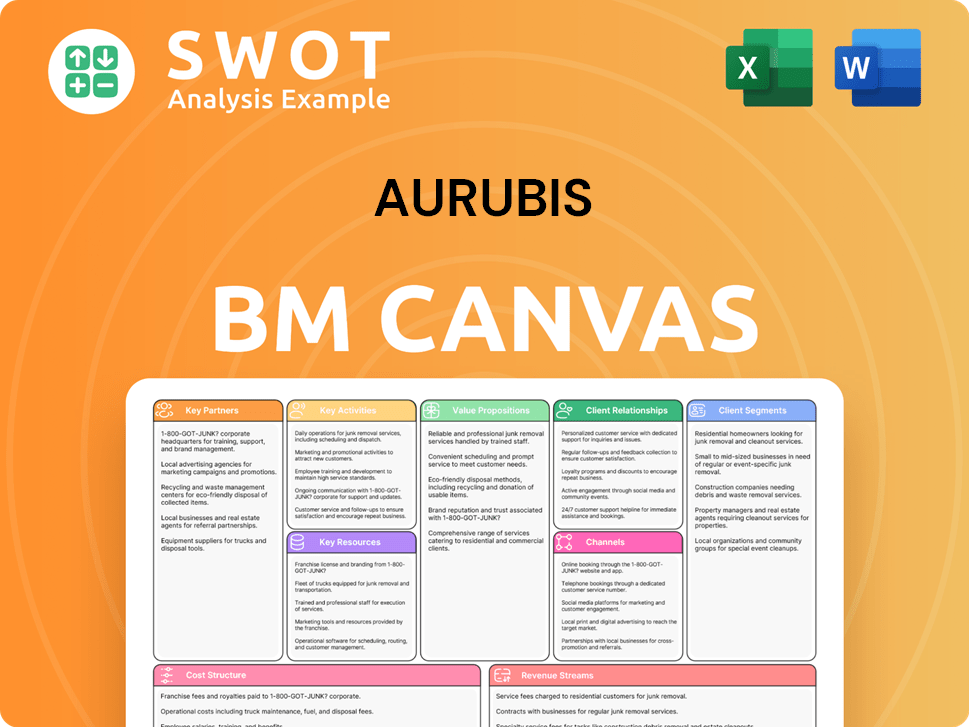
What is the Timeline of Key Events for Aurubis?
The Aurubis history is marked by significant developments. From its roots in 1770 with a silver separating furnace, the company evolved through the founding of Elbkupferwerk in 1846 and Norddeutsche Affinerie AG in 1866. Key milestones include the commissioning of the first fully continuous copper electrolysis system in 1876, the start of production at the Peute plant in Hamburg in 1910, and the 1998 IPO. Acquisitions like Hüttenwerke Kayser AG in 2000 and Cumerio in 2008 expanded its reach. The company rebranded as Aurubis AG in 2009, acquired Luvata in 2011, and celebrated its 150th anniversary in 2016. The launch of the Industrial Heat project in 2018, the acquisition of the Metallo Group in 2020, and the pilot of a hydrometallurgical process in 2022 further demonstrate its commitment to innovation. The upcoming opening of a new multimetal recycling plant in Richmond, US, in 2025, signifies a major expansion in processing capacity.
| Year | Key Event |
|---|---|
| 1770 | Commissioning of a silver separating and smelting furnace in Hamburg-Altona. |
| 1846 | Founding of Elbkupferwerk in Hamburg. |
| 1866 | Norddeutsche Affinerie AG, the predecessor of Aurubis, is officially founded in Hamburg. |
| 1876 | First fully continuous copper electrolysis system is commissioned. |
| 1910 | Production begins at the Peute plant in Hamburg. |
| 1998 | Norddeutsche Affinerie AG goes public with an IPO. |
| 2000 | Acquisition of Hüttenwerke Kayser AG. |
| 2008 | Norddeutsche Affinerie acquires over 91% of Belgian copper processor Cumerio. |
| 2009 | Norddeutsche Affinerie AG is renamed Aurubis AG. |
| 2011 | Acquisition of the Luvata Rolled Products Division. |
| 2016 | Aurubis celebrates its 150th anniversary. |
| 2018 | Launch of the Industrial Heat project in Hamburg. |
| 2020 | Acquisition of the Belgian-Spanish Metallo Group. |
| 2022 | Piloting of a hydrometallurgical process to recycle Li-ion battery Black Mass at the Hamburg site. |
| 2025 | Scheduled commencement of operations for the new Aurubis Richmond multimetal recycling plant in Georgia, US. |
Aurubis is investing approximately €1.7 billion in strategic projects. These investments are aimed at driving sustainable growth and expanding recycling capacities. The company focuses on increasing its processing capabilities and decarbonizing its production processes.
A key goal is to increase recycling processing capacity by 30% by 2027. This expansion supports the circular economy and reduces environmental impact. The new US recycling plant will have a processing capacity of 180,000 metric tons annually.
For the 2024/2025 fiscal year, Aurubis anticipates operating earnings before taxes (EBT) between €300 and €400 million. Analysts project a revenue increase to €19.3 billion in 2025. This outlook reflects strong demand for Aurubis' products.
Aurubis aims for carbon neutrality well before 2050. The company is investing in a new precious metals processing plant in Hamburg. Expansion of cathode production in Bulgaria is also planned to meet growing European demand.
Aurubis Porter's Five Forces Analysis
- Covers All 5 Competitive Forces in Detail
- Structured for Consultants, Students, and Founders
- 100% Editable in Microsoft Word & Excel
- Instant Digital Download – Use Immediately
- Compatible with Mac & PC – Fully Unlocked
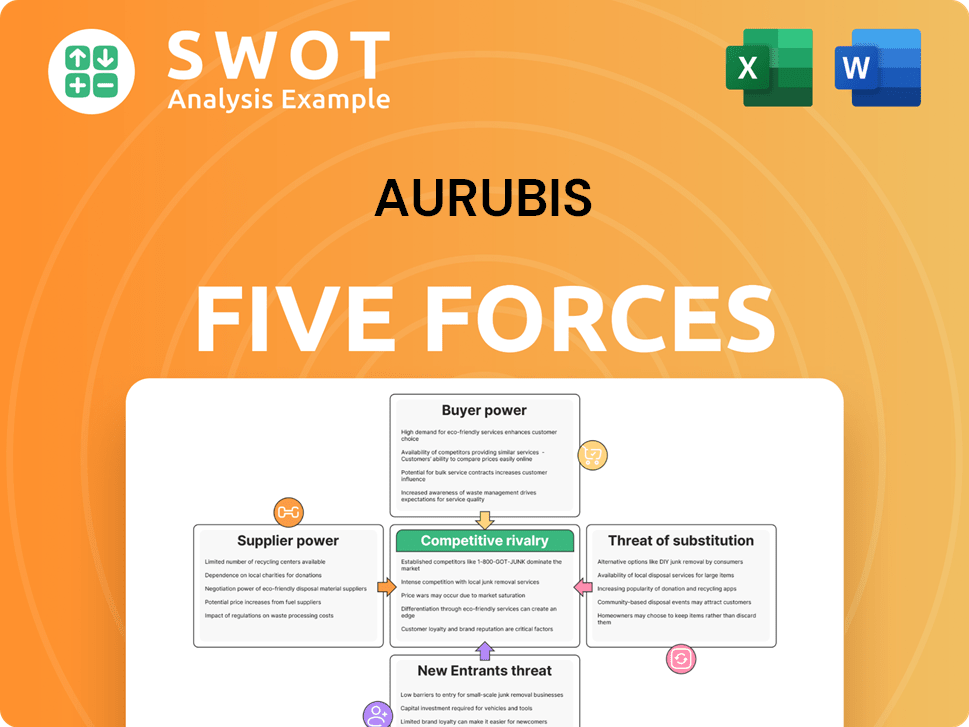
Related Blogs
- What is Competitive Landscape of Aurubis Company?
- What is Growth Strategy and Future Prospects of Aurubis Company?
- How Does Aurubis Company Work?
- What is Sales and Marketing Strategy of Aurubis Company?
- What is Brief History of Aurubis Company?
- Who Owns Aurubis Company?
- What is Customer Demographics and Target Market of Aurubis Company?
Disclaimer
All information, articles, and product details provided on this website are for general informational and educational purposes only. We do not claim any ownership over, nor do we intend to infringe upon, any trademarks, copyrights, logos, brand names, or other intellectual property mentioned or depicted on this site. Such intellectual property remains the property of its respective owners, and any references here are made solely for identification or informational purposes, without implying any affiliation, endorsement, or partnership.
We make no representations or warranties, express or implied, regarding the accuracy, completeness, or suitability of any content or products presented. Nothing on this website should be construed as legal, tax, investment, financial, medical, or other professional advice. In addition, no part of this site—including articles or product references—constitutes a solicitation, recommendation, endorsement, advertisement, or offer to buy or sell any securities, franchises, or other financial instruments, particularly in jurisdictions where such activity would be unlawful.
All content is of a general nature and may not address the specific circumstances of any individual or entity. It is not a substitute for professional advice or services. Any actions you take based on the information provided here are strictly at your own risk. You accept full responsibility for any decisions or outcomes arising from your use of this website and agree to release us from any liability in connection with your use of, or reliance upon, the content or products found herein.